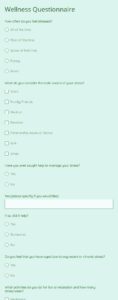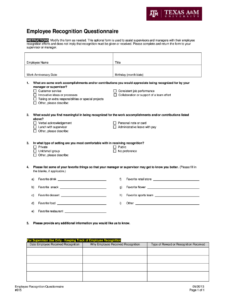Managing your finances effectively is a cornerstone of personal well-being, and in today’s digital age, credit cards are an integral part of most people’s spending habits. While they offer convenience, rewards, and a vital credit-building tool, they also demand diligent oversight. It’s easy to swipe, tap, or click and quickly lose track of where your money is going, potentially leading to financial surprises or even debt if not monitored carefully.
This is where a structured approach comes in handy. Keeping a precise record of your credit card transactions can transform your financial management from a guessing game into an informed strategy. A simple yet powerful tool like a credit card use log template can provide the clarity and control you need to stay on top of your spending, identify potential issues, and achieve your financial goals with greater confidence.
Why a Credit Card Use Log is Your Financial Sidekick
Credit cards offer incredible flexibility, but that very ease of use can sometimes be a double-edged sword. Without a clear record, individual transactions can blend together, making it difficult to remember specific purchases or track your overall spending patterns. Many people find themselves surprised by their monthly statement, realizing they’ve spent more than they intended or on categories they hadn’t prioritized. This lack of transparency can lead to missed budget targets and increased financial stress.
Implementing a dedicated log for your credit card activity brings a new level of awareness to your financial life. It acts as a real-time ledger, allowing you to instantly see the impact of each transaction on your available credit and overall budget. This immediate feedback helps curb impulse spending and encourages more thoughtful purchasing decisions, transforming a passive spending habit into an active, controlled process.
Beyond just tracking spending, a meticulous log serves as a crucial line of defense against potential fraud. By regularly comparing your log entries to your online banking statement or a physical statement, you can quickly spot any unauthorized charges. Early detection of fraudulent activity can save you considerable time, effort, and potential financial loss, ensuring that you’re only paying for what you actually bought.
Furthermore, for those who use credit cards for business expenses or for purchases that might be tax-deductible, a well-maintained log simplifies record-keeping. It provides a clear, categorized account of expenditures, making tax season significantly less stressful. You won’t have to sift through months of statements trying to recall the purpose of each transaction; the information will be neatly organized and readily available.
To truly maximize the benefits of this tool, understanding what to include is key. A comprehensive credit card use log template isn’t just about amounts; it’s about context.
Key Information to Include in Your Log
- **Date of Transaction:** The precise day your purchase was made.
- **Merchant Name:** Who you paid (e.g., “Grocery Store ABC,” “Online Fashion XYZ”).
- **Transaction Amount:** The exact cost of the purchase.
- **Category:** A simple classification (e.g., “Groceries,” “Dining Out,” “Utilities,” “Entertainment”).
- **Purpose/Notes (Optional but Recommended):** A brief description of what was purchased or why (e.g., “Weekly groceries,” “Dinner with friends,” “Monthly electricity bill”).
- **Payment Status:** A quick note if you’ve paid it off or if it’s pending.
- **Reference Number (if applicable):** For larger transactions or those needing specific tracking.
Crafting Your Ideal Credit Card Use Log Template
The beauty of a credit card use log template is its adaptability. There’s no one-size-fits-all solution, and the most effective log is one that fits seamlessly into your daily routine and meets your specific financial needs. Whether you prefer the tactile experience of pen and paper or the dynamic capabilities of digital tools, the core principle remains the same: consistent, accurate recording. Many people start with a simple spreadsheet in programs like Excel or Google Sheets, which offers excellent flexibility for customization and automatic calculations.
When setting up your template, consider how much detail you want to capture and what information is most valuable for your financial analysis. You might want to add columns for tracking rewards points earned per transaction, or perhaps a column to note if a purchase was a necessity or a discretionary expense. The goal is to create a system that empowers you, not one that feels like a chore. Don’t be afraid to experiment with different layouts or add conditional formatting in a spreadsheet to highlight certain types of spending.
Consistency is the bedrock of any successful financial tracking system. It’s far easier to spend two minutes entering a few transactions daily or every other day than to face a mountain of receipts at the end of the week or month. Set a reminder, pick a specific time, and make updating your log a non-negotiable part of your financial routine. This regular engagement helps solidify your awareness of your spending habits and reinforces positive financial behaviors over time.
Once you have a few weeks or months of data in your log, take the time to review it. Look for patterns: are there particular categories where you consistently overspend? Are there subscriptions you’ve forgotten about? This review process is where the real power of your credit card use log template comes to life, providing actionable insights that can guide future budgeting and financial planning.
- **Choose Your Format:** Decide between a digital spreadsheet (Excel, Google Sheets), a dedicated budgeting app, or a simple notebook.
- **Customize Columns:** Tailor the fields to capture the data most relevant to your financial goals.
- **Establish a Routine:** Dedicate a specific time daily or weekly to update your log diligently.
- **Regularly Review:** Analyze your entries to identify spending patterns, budget discrepancies, or potential fraud.
- **Adapt and Evolve:** Don’t hesitate to adjust your template or tracking methods as your financial situation or goals change.
Taking control of your credit card spending isn’t about deprivation; it’s about informed decision-making and empowerment. By consistently tracking your transactions, you gain unparalleled insight into where your money goes, allowing you to align your spending with your values and financial objectives. This proactive approach helps prevent financial stress and builds a strong foundation for future prosperity.
Embracing the habit of logging your credit card use fosters a deep sense of awareness and accountability, transforming credit cards from potential liabilities into powerful tools for managing and building your wealth. It’s a small step that yields significant returns in terms of peace of mind and financial security.

